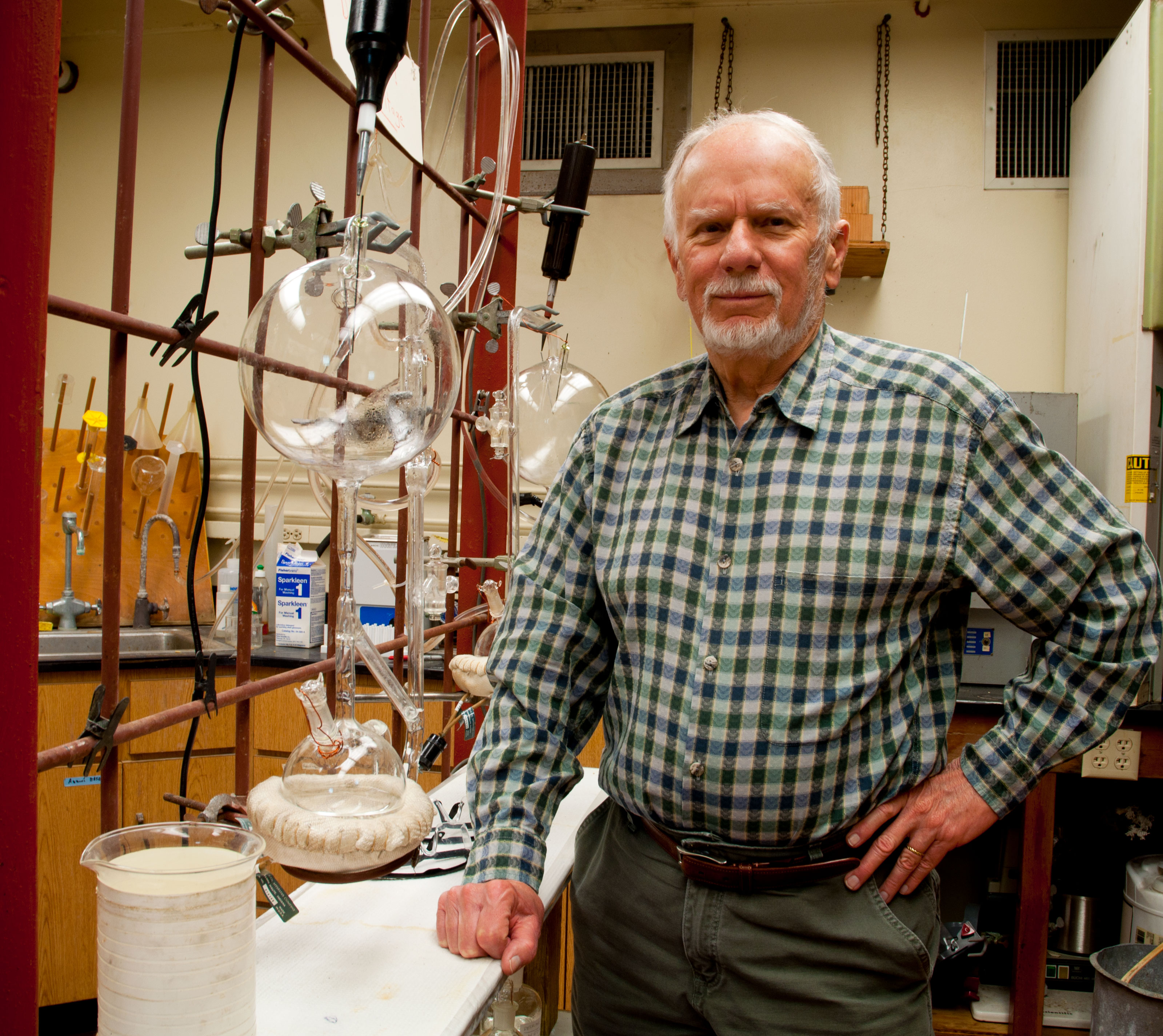Did Volcanoes Provide the Spark of Life?
Scripps Oceanography marine chemist presents scenario on what animated primordial soup
Published Date
Story by:
Media contact:
Share This:
Article Content
The theory goes that life formed on Earth when lightning strikes created random bits of organic matter that eventually coalesced into the first living organisms.
It’s the ultimate origin story but difficult to prove since all this happened some four billion years ago. And there are other complications. A big one is that the planet was mostly covered with ice and only a very small amount of land protruded above it. That presents a problem for the established narrative because it means that the physical conditions that usually electrify clouds and produce lightning were infrequent at best.
Jeffrey Bada, an emeritus professor of marine chemistry at Scripps Institution of Oceanography at UC San Diego, proposes that volcanism could have produced the lightning bolts that charged life into existence. As magma from the planet’s interior occasionally broke through to the surface, its violent arrival would have been attended by abundant electrical energy.
“It presents a new idea and a context that hasn’t been explored so much,” Bada said.
Bada is a former student of Stanley Miller, the co-architect with Harold Urey of the famed Miller-Urey experiments that attempted to replicate the chemical conditions that gave rise to life on Earth. The experiments conducted by the two researchers – both of whom were founding members of the UC San Diego faculty when the university came into being – relied on electrical arcs generated in the lab to simulate lightning strikes. Since those experiments, conducted in the 1950s, scientists have successfully produced amino acids in re-enactments. At present, the goal of the field is to replicate what would have been the next step: the creation of RNA that would contain the information organic matter would need to replicate itself.

Emeritus Scripps Oceanography marine chemist Jeffrey Bada in his laboratory with instruments used to replicate the origin of life on Earth, 2011.
Bada’s hypothesis, presented in a commentary published April 10 in the journal Nature Communications, provides an explanation for how the necessary electrical energy would have been provided on early Earth. He notes that the present day provides many examples of how intense volcanic lightning can be, in particular when eruptions start underwater. In 2022, the underwater volcano Hunga Tonga–Hunga Haʻapai in the southern Pacific Ocean belched a mix of gases, ash, and seawater vapor via a 53-kilometer (33-mile)-high plume. Scientists estimate that the volatile mix of ingredients produced more than 25,000 lightning strikes, or 85 per second in a five-minute period.
Present today as well as four billion years ago are hot spots, where magma pushes through weak places in Earth’s crust to reach the surface. Such hot spots created the Hawaiian Islands among other landmasses and, as Bada notes, were probably a relatively large portion of what land there was in the planet’s first years. The mechanism of plate tectonics that formed the continents is not believed to have yet gotten started.
Bada noted that volcanic activity contributed not only lightning to the formation of life, but also pumice, the porous volcanic stone produced in eruptions. Pumice can float and indeed, a recent eruption in Indonesia produced a raft of pumice measuring nearly 100 kilometers (62 miles) in length that drifted across entire ocean basins. Such rafts would have transported the organic compounds produced in the volcanic island lightning events across vast areas of the oceans, where they could have washed up on nascent continents, seeding them with the ingredients of life.
Share This:
You May Also Like
Stay in the Know
Keep up with all the latest from UC San Diego. Subscribe to the newsletter today.




